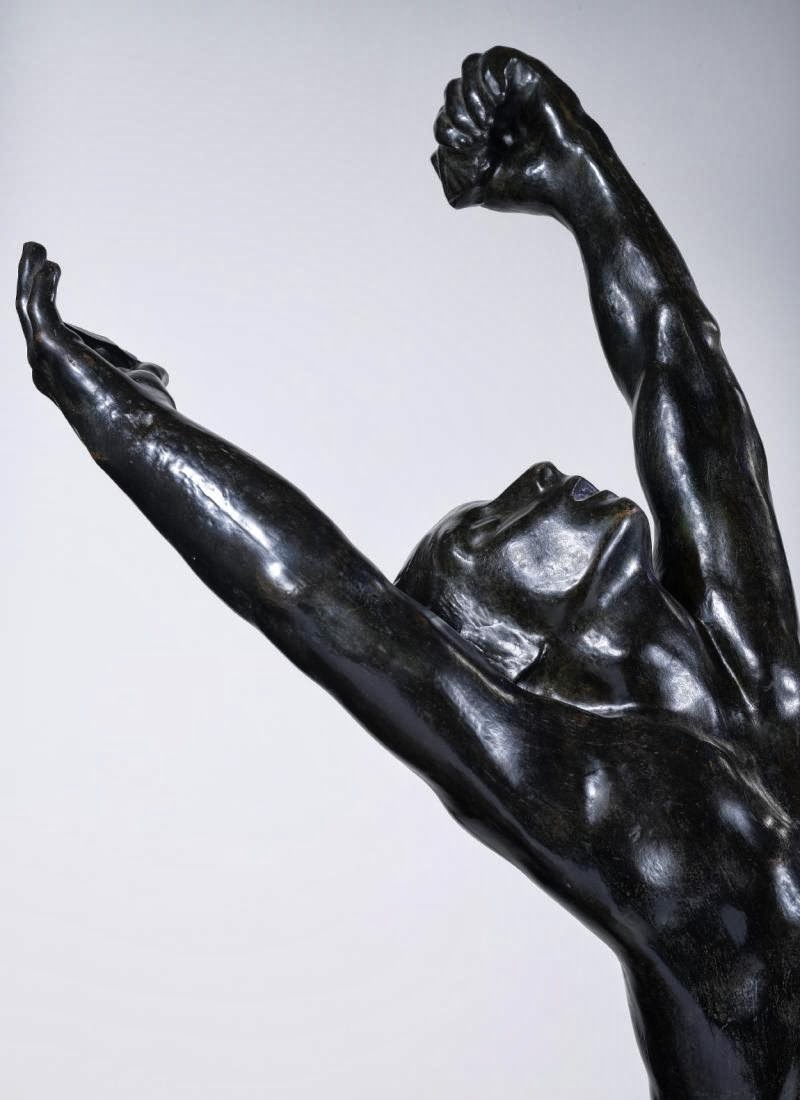Like the Impressionists, the French
sculptor Auguste Rodin captured moments in time. The sculpture of Impressionist style
translates the same artistic theories to the three-dimensional. Very much similar to the way in which
Impressionist painters would dot their canvases with paint, Impressionist
sculptors, like Rodin, produced uneven surfaces with added pieces, applied bit
by bit. Life's fleeting moments were
thematically portrayed here, too.
Here we see the artist's
envisioning of the Prodigal Son. Not to
mention the figure's passionate gestures and upward-stretching body, the way
light and shadow play over the uneven surface of the figure gives it life and
vitality. This sculpture is rich in
energy, movement, and emotion. Rodin
intended to express joy and sorrow and pain.
The prodigal son, with head and arms reaching upward, is a powerful
image. His wealth and self-esteem gone,
at the edge of despair, he pleads for forgiveness. Here the artist's vision of pain and
desperation is so effective that, like the father to whom the son pleads, you,
the viewer, are moved to show forgiveness.
This is not a contemporary subject,
so it feels out of place with the other Modernist works we have been looking at
so far. Rodin's Impressionistic style characterized
his sculpting technique and the way in which he wanted to portray his figures,
but it did not spread into his subject matter.
Although he did sculpt relatively contemporary images, such as his
homage piece dedicated to Balzac, finished approximately forty years after the
famous French writer's death, most of Rodin's works deal in past, Classical, or
philosophical subjects.


No comments:
Post a Comment